This post may contain affiliate links to things like tours, hotels, Amazon associates and products. These help me earn a small commission at no additional charge to you.
Soon after arriving in Kuala Lumpur, the staff at my told me about Taman Negara, a 135 million-year-old tropical rainforest and protected national park in central Malaysia.
Having spent much of the last few months in cities and touristy towns in Thailand, going off-grid and escaping the smog of the city seemed appealing.
As it turned out, I hadn’t realised just how off grid I’d be going.
I decided to go with the tour offered at my hostel. There were a variety of options – a free and easy pass which included your travel and accommodation and allowed you to sort your activities separately, a day trip, a one-night trip, and the best value package – a three-day, two-night trip including hostel accommodation, making it cheaper than the shorter options which were based in hotels.
Taman Negara National Park
So it was decided – I was off to vanish into the vast Malaysian jungle for three days. The park measures up at seven times the size of Singapore and is home to tigers, elephants, leopards, a network of native tribes and an abundance of creepy crawlies (it’s a good thing I’m not scared of spiders or snakes as I was about to encounter plenty).
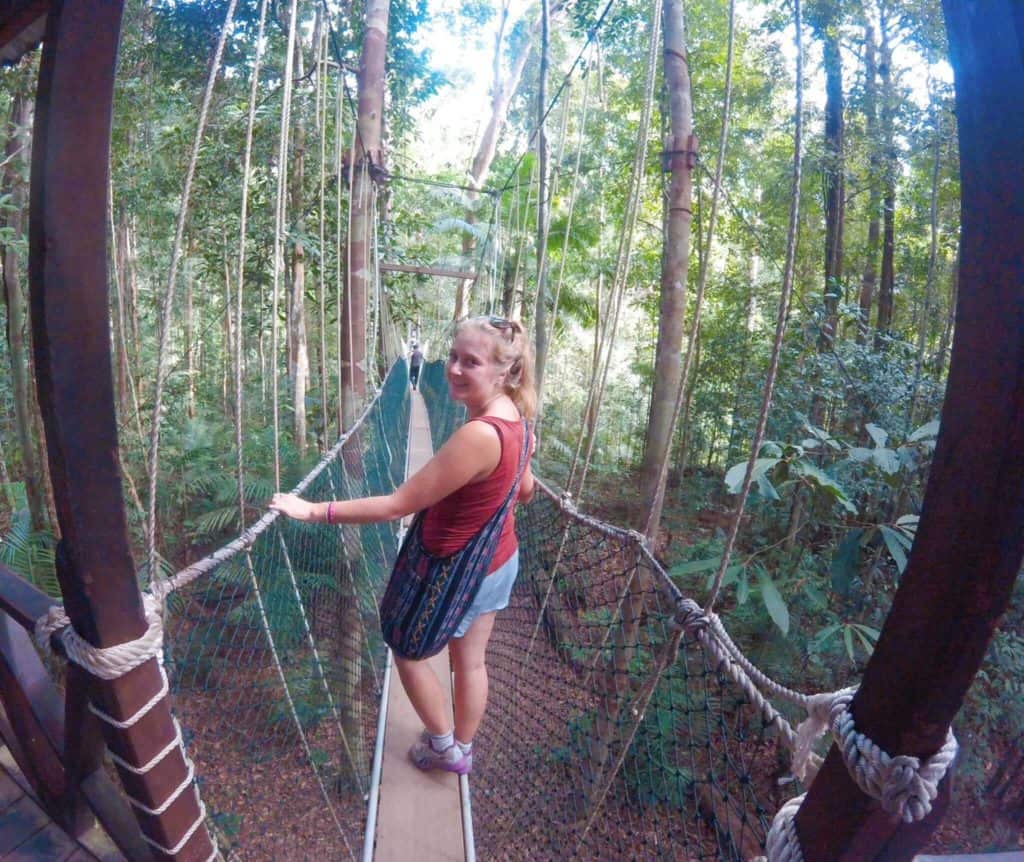
Getting there
We set off from Kuala Lumpur bright and early from the Han Travel office and after a warning that the roads would be bumpy and a lot of screeching and flying around when this proved to be true, we arrived at Kuala Tembeling jetty where we stopped for lunch. We ate rice and chicken which we yet to realise would be our every meal for the next three days. Much like Ross and Rachel (but were they?), chicken rice and I are now on a break.
From Kuala Tembeling we hopped aboard a thin, wooden boat and settled down for a three-hour ride down the river. The muddy waters reminded me of the Mekong which winds all around Southeast Asia. Just like the Mekong, locals popped out to climb into boats and use the river for transport, catch fish, collect water and wash clothes (though quite frankly I’d need to re-wash anything that had come into contact with the murky brown water).
I’d never thought much about the uses of rivers before this trip but it’s no coincidence they people live as close to them as possible – before roads, plumbing and drinking water, we’d have been in trouble without them.
In my tour group were two Swiss girls, Vera and Angela and three Belgian guys, Nebil, Jamal and Osma. I first spoke to the boys when one of them turned round to me on the boat and said ‘Can I offer you a chocolate biscuit?’
No friendship should start any other way if you ask me.
During the journey we admired the sprawling rainforest lining the riverbanks and watched lazy water buffalo enjoy a mud bath in the shallows (very detoxifying and great for the skin I’d imagine).
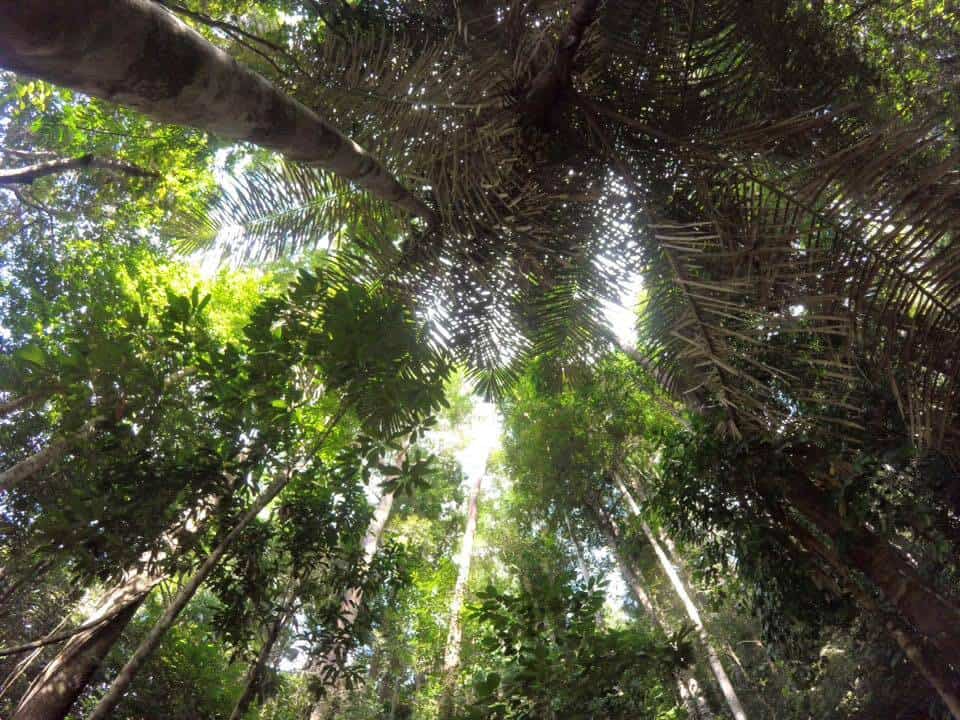
Setting up base in Kuala Tahan
Eventually, we arrived in Kuala Tahan, the launching point for our jungle activities which comprised of a few hotels and a tourist information centre. We pulled into the jetty where some floating restaurants bobbed on barrels, dolling out our rice and chicken fixes for our next couple of days’ lunches.
As we were staying in hostel accommodation I was expecting to be a bit more in touch with the outside world than if we were staying, for example, in a village community or homestay. For that reason I hadn’t particularly mentioned to anyone where I was going, assuming I’d be on the Wi-Fi whilst at the resort and could keep people posted when I got there.
On arrival however, we were told the Wi-Fi was ‘down’ – which seemed to be its permanent status. Due to our activities being a long walk away and a pick-up collecting us each morning, there was no chance to seek out signal and inform my loved ones that I wasn’t a missing person.
Some members of the group marvelled over how fantastic and free they felt being out of Wi-Fi zone. I hear that too but I’d have felt slightly more fantastic had I not been able to predict that my Mum would probably soon be on the phone to the Malaysian Embassy assuming I had been recently kidnapped.
Anyway, when I wasn’t inadvertently heading towards a police investigation, I was reaping the benefits of the world’s oldest rainforest.
Exploring the jungle
We began the activities with a jungle walk on our first evening. Donning trainers, grabbing our torches and smearing ourselves in bug spray, we met our guide and headed towards the squawking, buzzing and murmuring jungle.

En route, we passed a black and white animal which was the same size as a horse with a nose a bit like an elephant, and was standing near to the hotel accommodation eating from a tree. Weirdly, no one seemed to acknowledge that we were clearly passing by a mythical beast so I stopped the tour guide for an explanation as to said beast. He told me it was a tapir – something I’d definitely heard of before but not seen so far on my Asia travels, and certainly not wandering about in the wild.
Once we entered the jungle our guide had a great eye for spotting insects and mammals I’d never have noticed in the dark. Some of these were very cute including a sleepy slow loris which clambered through the branches. Some were less cute – scorpions I’m looking at you.
Our guide used UV light to make the black-skinned scorpions glow white – far easier to spot on the dark ground. Pincers and all, the scorpions measured a good few inches and I was more than happy to stand my distance away from them. We also saw a collection of snakes and spiders so the walk was certainly not for anyone with phobias – although it could have been a good place to overcome them.
We stopped at the Than Hide in the hope of seeing bigger animals in the open space in front of it. We spied three or four deer grazing, their eyes glowing in the torchlight. Unfortunately, that was our lot – apparently leopards are sometimes seen but I’d be surprised if they’d show themselves with our chatter and torches, and while elephants and tigers do reside in the park, they live much further out in the dense woodland.
I had plenty of questions for our guide – what did the various animals eat? Had he ever seen a tiger, and when? Did they have problems with poachers? Did native villagers ever come into contact with wild animals and did they prove dangerous to the people? I imagine the poor guy was relieved when I finished quizzing him.
The (lack of) nightlife
Taman Negara was certainly not a nightlife hotspot. Short of buying a beer from the resort fridge and sitting on a wicker chair to drink it, other nighttime options included reading, going to bed… and that was about it.
Earplugs were an essential as a pack of giant bugs continually seemed to get confused by electric lights and crash into them repeatedly whilst making a high-pitched squeaking noise. For relatively small animals they were insanely loud and woke us up through the night, along with other eerie jungle noises.
Day 2 – canopy walks
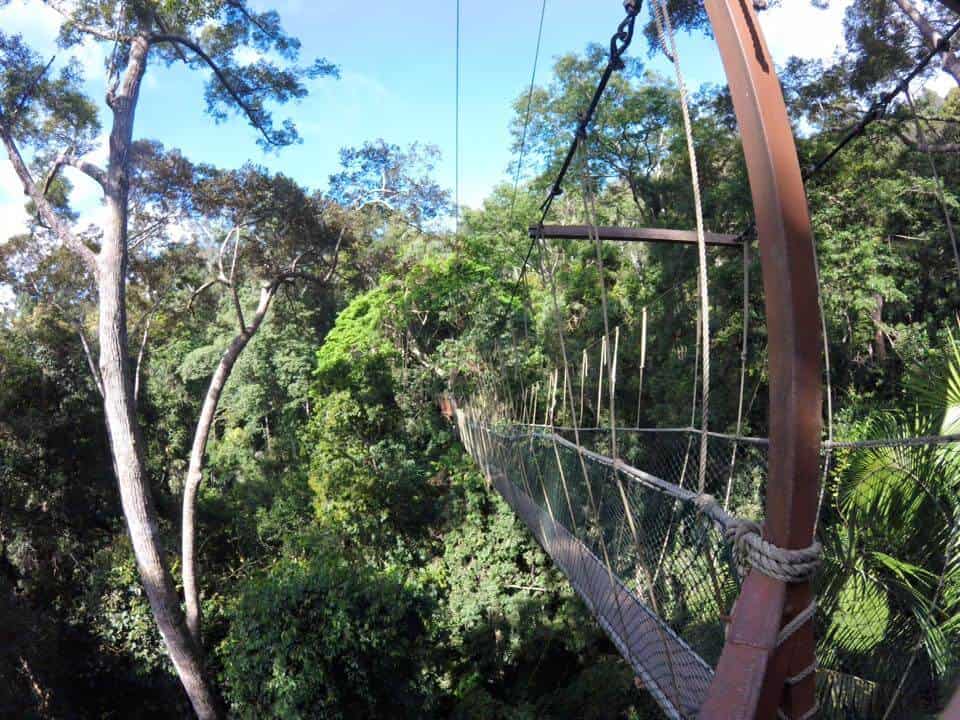
We were up early for breakfast and our full day of activities which began with a daytime trek and canopy walk. During our trek, we encountered even more wildlife and reached some fantastic spots to see the view, though I’m not sure I’ve ever sweated so much in my life thanks to the humidity of the forest.
We ventured across a series of canopy walkways which were a real experience. Some of them were hanging what felt like miles above the treetops sending my stomach lurching as I glanced down.
The bridges were perfectly safe but could certainly be described as ‘rickety’, swinging slowly with a mind of their own. We reached various treehouse stop points during the maze and each time it was a relief to be on land that wasn’t moving – they were also a handy place to take photos as we were urged to leave our hands free for holding on whilst on the walkways (you didn’t need to tell me twice!)
Our guide teased us afterwards asking us how brave we’d been and saying he’d heard us screaming from his position at the finish post.
Visiting a tribe
After lunch (no prizes for guessing what) we headed out on the second part of our day: meeting a local tribe. I’d seen a lot of similar local tribe trips advertised in Thailand and hadn’t been sure what to think or expect of them. Surely a local tribe’s authenticity is compromised by daily groups of Westerners spilling into their homeland, gawping and taking selfies. I imagine the tour companies ensure the locals are on form each day, partaking in traditional activities and living out life like a show.
I felt relieved when the people we met seemed happy and smiley rather than seeming frustrated at our being there. The group who live within Taman Negara National Park are known as the Batek tribe, of which there are predicted to be between five and seven hundred members.
Instead of living together as one large village, they’re split into various community groups, often of around 40 to 60 people who stay in regular contact with other branches of the group. Keeping in touch is purely old school of course – and done by visiting each other and passing messages via word of mouth (certainly no Facebook and Whatsapping here).
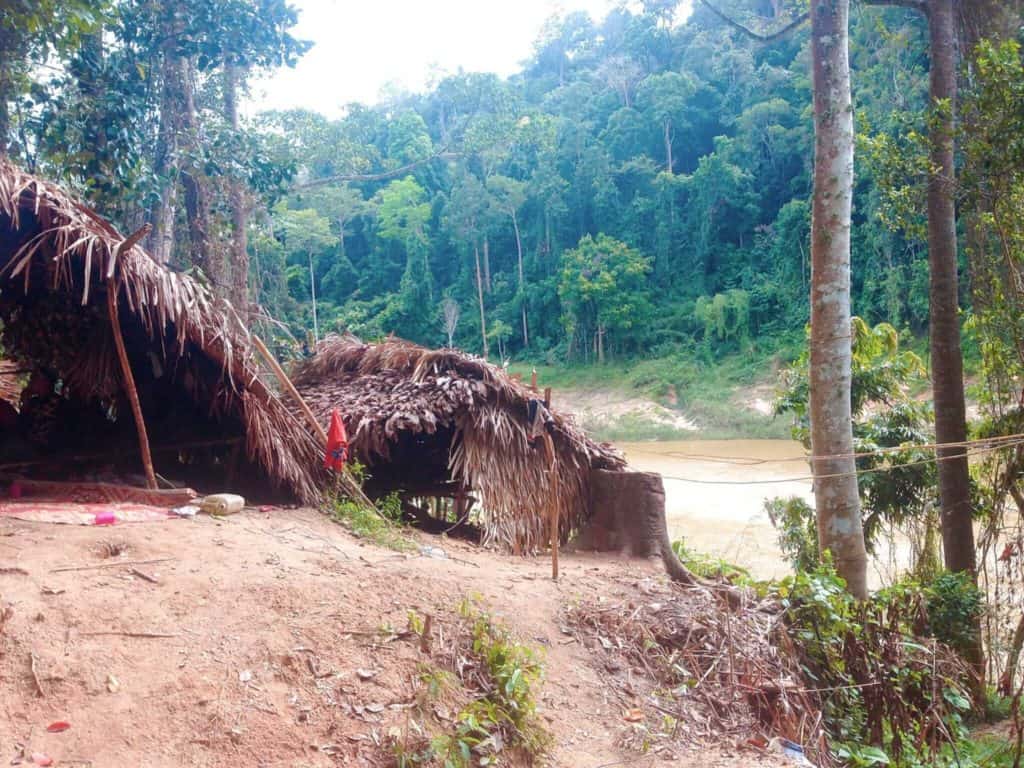
The settlement we arrived at was nestled by a river bend and comprised of a few basic houses: wooden, makeshift and topped with bamboo leaves. Some members of the tribe were out hunting or gathering in other spots in the forest, but a few toddlers, teenagers and women were at the camp, seeming to relax and chat with their neighbours.
I was fascinated as the tour guide told us about their lifestyles. All their meals were collected from the forest and they ate mainly fish and yams, but sometimes monkey and deer. The children didn’t attend schools. They rarely entered civilization, and if they did it would be one or two members only going as far as the local village.
They had no books, no literacy, the teenagers had never seen a bar, a phone, a computer, a video game, a city. They’d never encountered media so I wouldn’t think they’d know how other people around the world live.
Again, I had so many questions. It was the complete opposite to when a teacher or lecturer asks ‘any questions?’ and an awkward silence hangs in the air. Here are some of the ones I asked and the answers I got…
What do they do for healthcare?
Apparently, the leader of the tribe is versed in knowledge of health and ailments from his predecessor and also takes the role of ‘shaman’ and people in the town who are ill come to him to be healed.
What happens during childbirth?
The women give birth in the forest behind trees and six out of ten babies tragically die in the process.
What are their relationships like?
I was told that young people get married between 16 and 18 and a confusing process of courtship was explained to us in which a young girl usually tells a friend she likes a male member of the community and the friend will tell the girl’s parents. The tribe are particularly shy so direct exchanges over personal issues are rare. Once the bond is determined, marriage will take place soon after.
Where do the tribe buy their relatively modern-looking clothes?
In markets in the nearest town on the rare occasions members make a visit and bring back supplies and attire for the others.
How do they buy them without jobs and bank accounts?
They bring tradeable items from the forest such as sandalwood and tree sap – used to make incense – to the village and exchange these for things they need.
What is their religion?
Animistic – no specific gods but a religion based around the spiritual properties of nature and objects.
What happens to the bodies of the dead?
They are left in specially constructed tree houses which serve as graves.
What do people do all day?
If they’re not adult men who go hunting, they sit and around, chat and socialise.
It all blew my mind. Watching a boy who couldn’t have been older than about 14 or 15 walk through the clearing in jeans and a t-shirt, he could have walked down a street in London and not have turned a head. Instead, his whole life was based in the jungle learning how to hunt and leading a lifestyle totally different to his Western peers. He sat in a hammock smoking a cigarette and the smoke hung in the air for ages amidst the tree canopy. If I never went to school, uni or work, I think I’d have to take up smoking to pass the time, too!
Our guide spoke to the locals in Malay (they speak a basic level of the national language but mainly their own dialect) and a teenage boy gave us a demonstration of start a fire without a match or lighter.

He then showed us how to use a blowpipe: a long thin contraption used for hunting and shooting animals. The body of the tool is made of bamboo and hollow to allow the dart to shoot down it, while the dart is made from bamboo sharpened into a lethal spike and filed down with a sandpaper-textured leaf.
When blowing down the tube to send the dart shooting out, the locals aim away from the animal’s central body to avoid poisoning the meat, instead aiming for a leg and tracking the animal until it dies a short while later. We all got the chance to try out the blowpipe but my aim wasn’t great – I’m not sure I’d get by in the jungle.
It makes me think just how convenient it is to buy a chicken fillet at Tescos.
I joke, but it is crazy how much time and effort goes into the process of staying alive when you’re completely self-sufficient. Our society has your back if you’re not good at hunting (which I think applies to basically everyone), cooking or healthcare as we have people who are good at all those things. Here, these people have to be good at every essential task, leaving little room for leisure.
I’m getting very philosophical. I’d miss the Tesco’s cheese aisle far too much for this kind of lifestyle.
Was it authentic?
Back at the hostel we discussed the authenticity of the setup. One of the girls said that she found it slightly contrived – the people must have to take part in the same blowpipe demonstration every day, so the way they live is to some degree a performance.
I agreed, but said if we want to encounter people who live like this, we’re limited in the ways we can do it. These communities aren’t mapped on Google; there isn’t public transport there; we wouldn’t be able to communicate with them, and we might offend them or even put ourselves in danger by trying to reach them independently.
From their perspective, they receive contributions from the tour companies and a level of comfort they might not otherwise. But I am slightly confused over the ethics, I’ll admit.
I also wonder how much we can ever know about these communities as the only information we have is what the tribe choose to communicate with our tour guides. A portrayal of a very traditional society was presented to us. If things they consider scandalous occur (like affairs, sex before marriage, gay relationships or crime), would they tell us? There’s no way to know without integrating into the community ourselves.
Rapid shooting
Finally, we rafted through the ‘rapids’ as our last activity of the day. I use the word rapids loosely, as they were both like a few bumpy waves. Two people were splashed. One person gasped loudly once. We probably hadn’t needed to put our valuables in a dry bag.
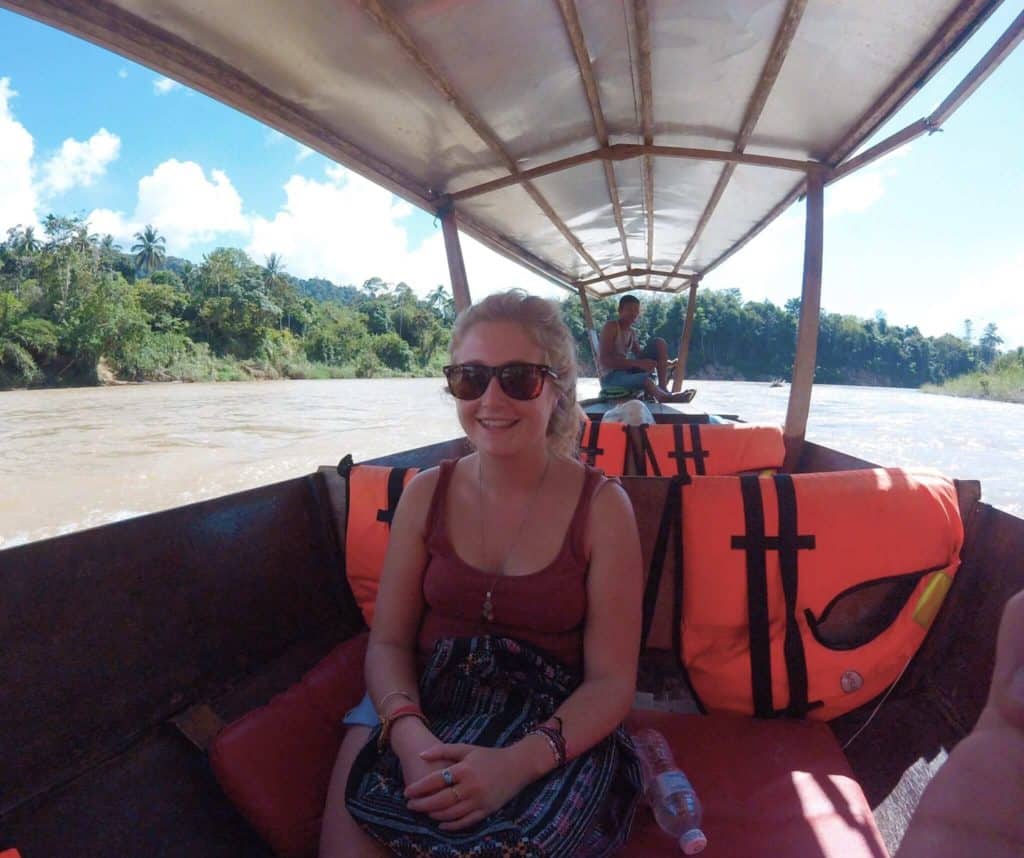
Day 3 – leaving
The next day we exited Kuala Tahan via another three-hour riverboat and a bus back to city life. I was glad to eat something that wasn’t chicken rice and stop my Mum from activating an international search and rescue mission, but I’ll always think back on my time in the jungle and the locals we met there.
It’s not for me to say our society is any worse or better than theirs but I’m grateful for the opportunities we have in comparison. And the cheese aisles.
Thanks for reading!
If you liked it, please share it 🙂
See you next time for more adventures,

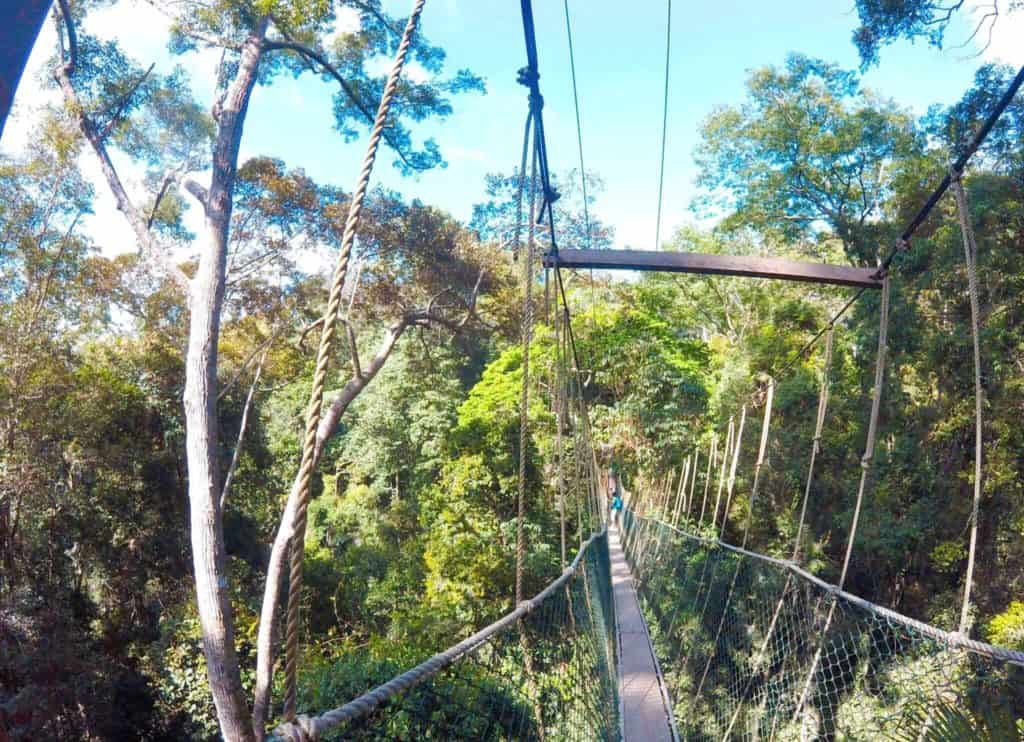
Thank you Rose for your stories and sharing of your experiences in Taman Negara, Malaysia. I am a Malaysian but now live in Singapore. I was searching for more information on Tmn Negara because my husband and I are planning our 1st trip there soon. We both were from Kuala Lumpur and are urban city dwellers all our lives. We love the natures and your writings and blog is lovely. I hope you have a great time travelling solo and stay safe! Cheers!
Hi Lim, thanks for the lovely comment! I hope you have a wonderful time in TN – it was ages ago I was there now but I still have fond memories of the place. Enjoy!
This is probably the most honest review I’ve read. Thanks for sharing. I love the way you write. I’ve become a fan.
Didn’t find a way of subscribing. Please add me to your mailing list.
Safe travels, and keep sharing.
Thanks! I’ll add you to the list!
heyyy, very helpful review, we also plan to visit taman negara from singapore via kuala tahan. do you know if its possible to hire guides on arrival in kuala tahan village? what month did you visit?
Hi Sam, I went in Feb. I’m not sure as I booked it all in KL but I’m pretty sure you could find guides there… maybe you could email some guesthouses to double check!